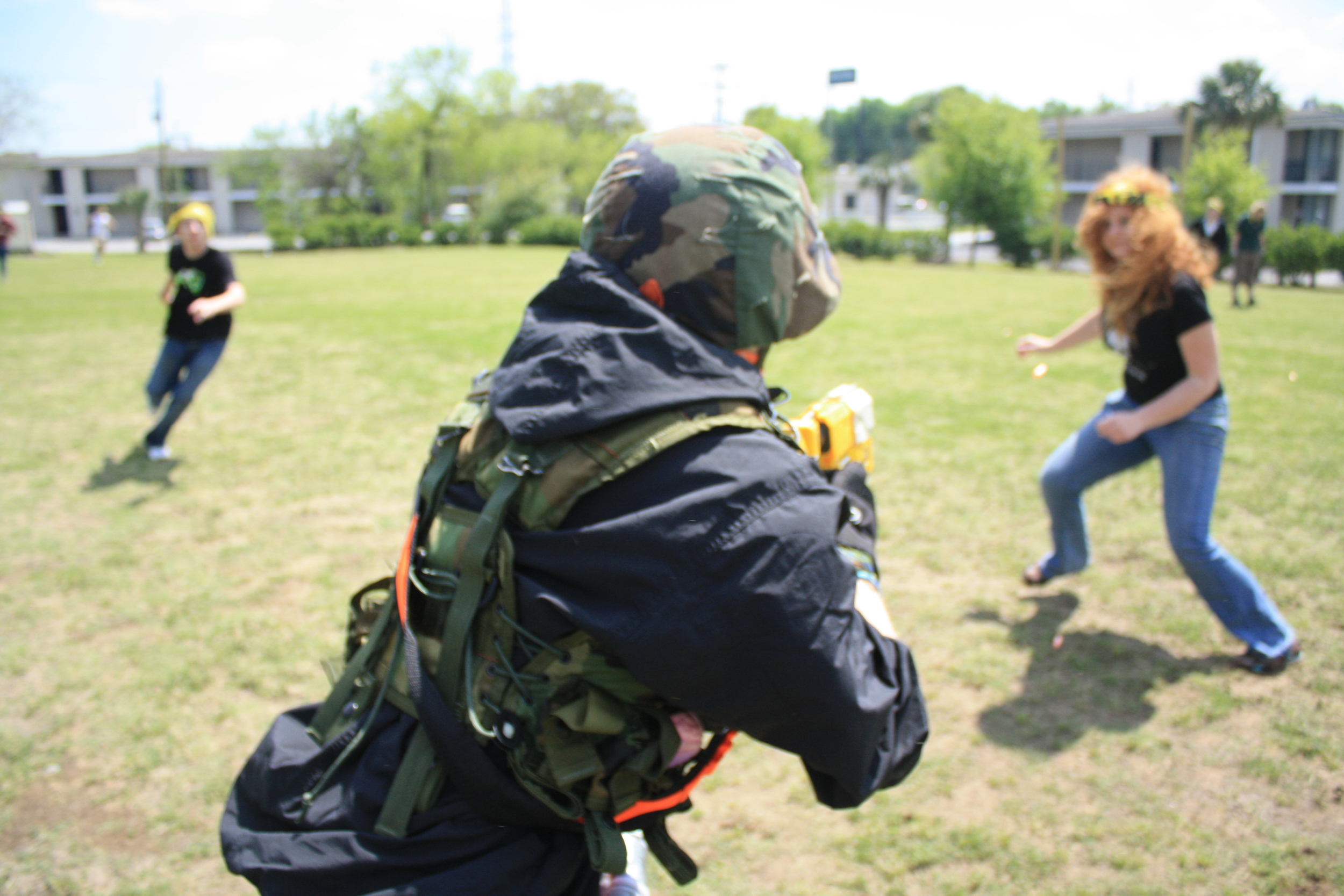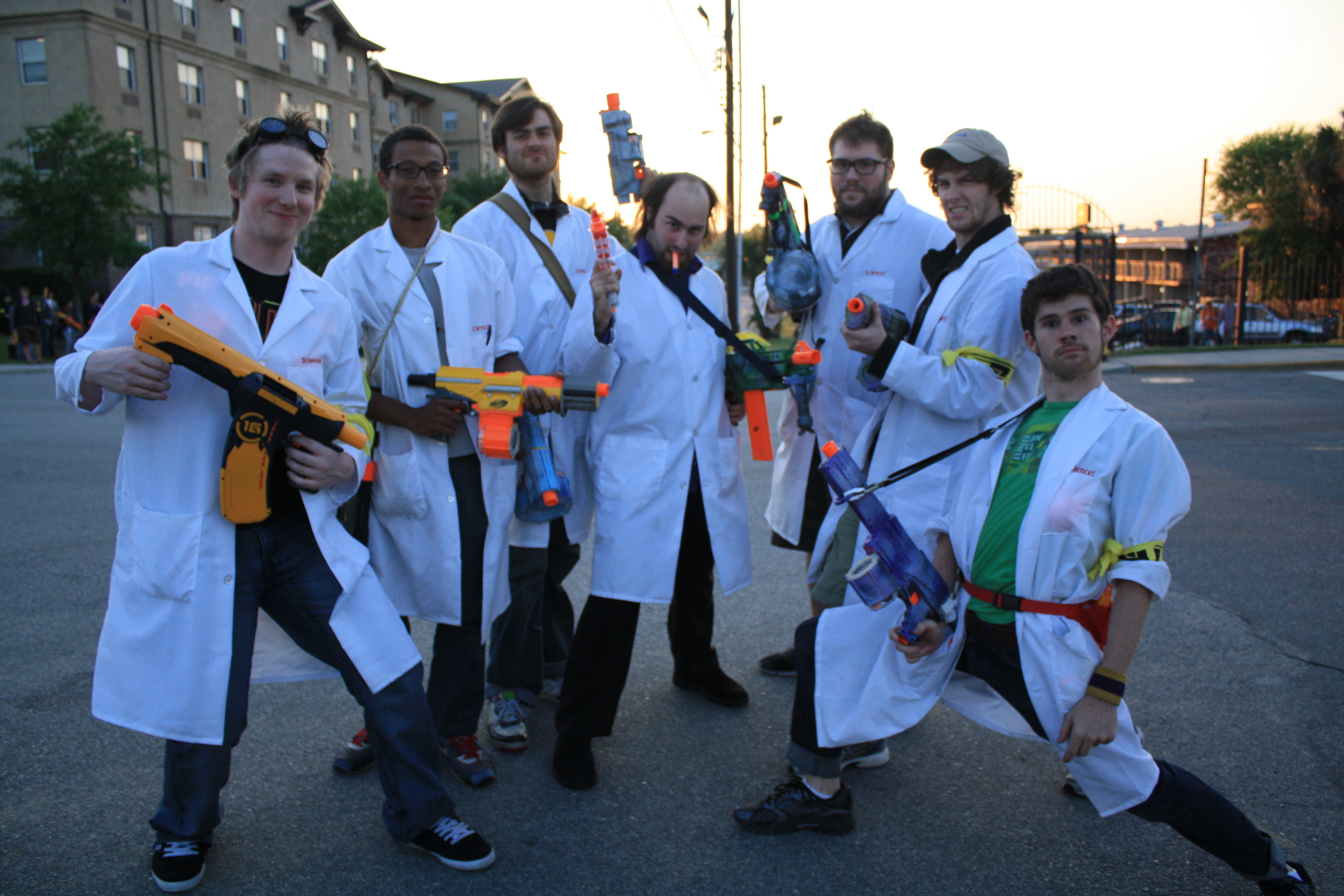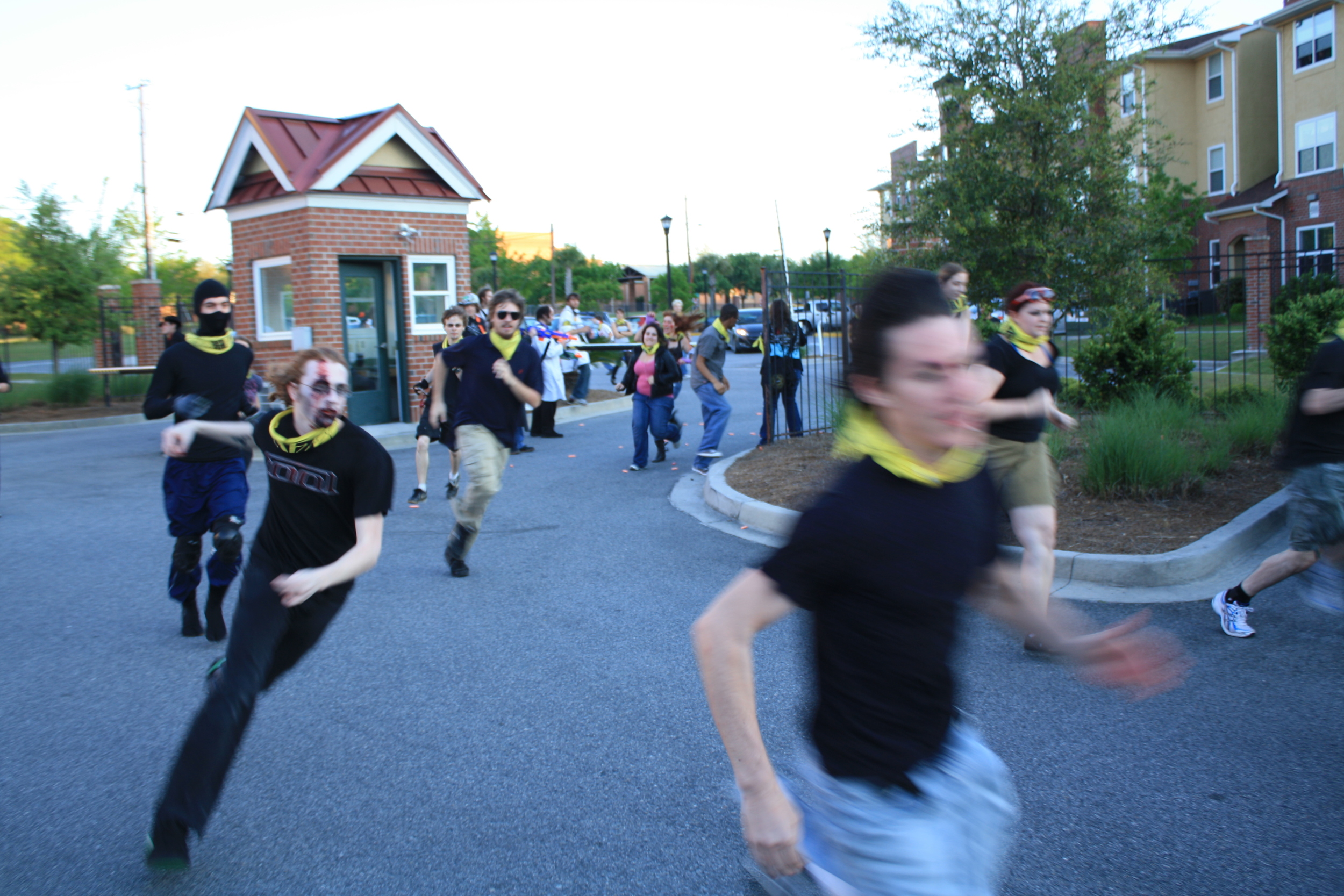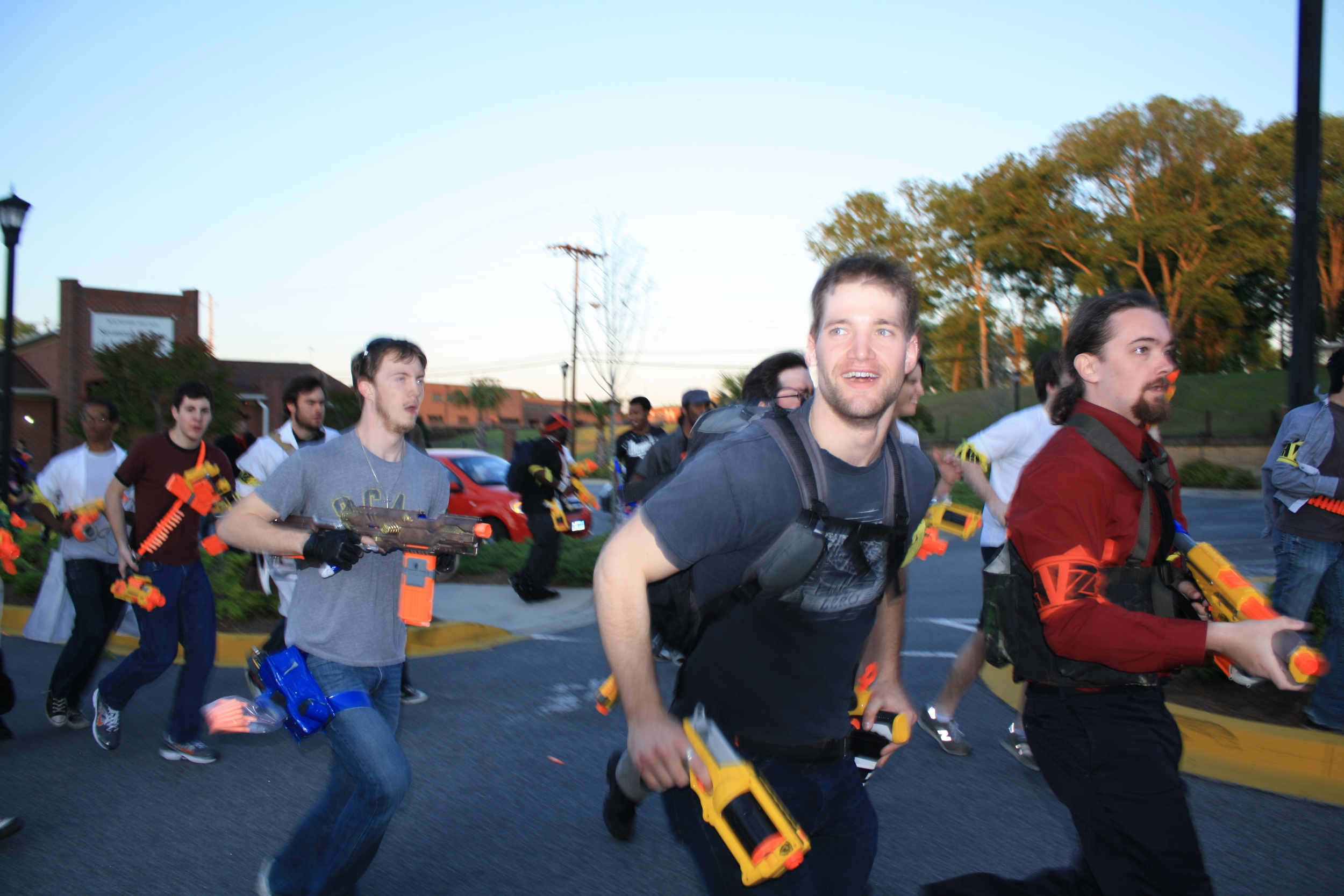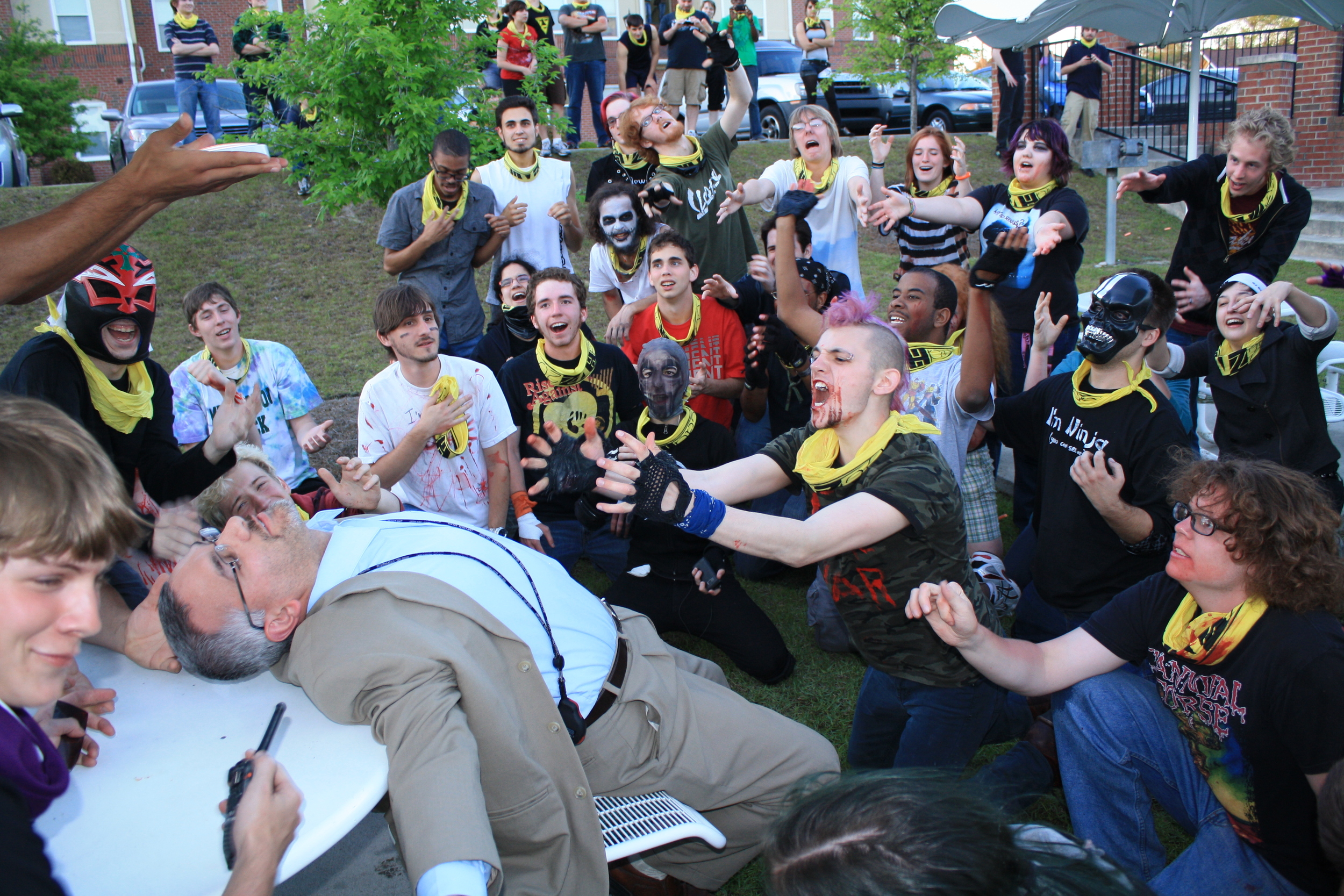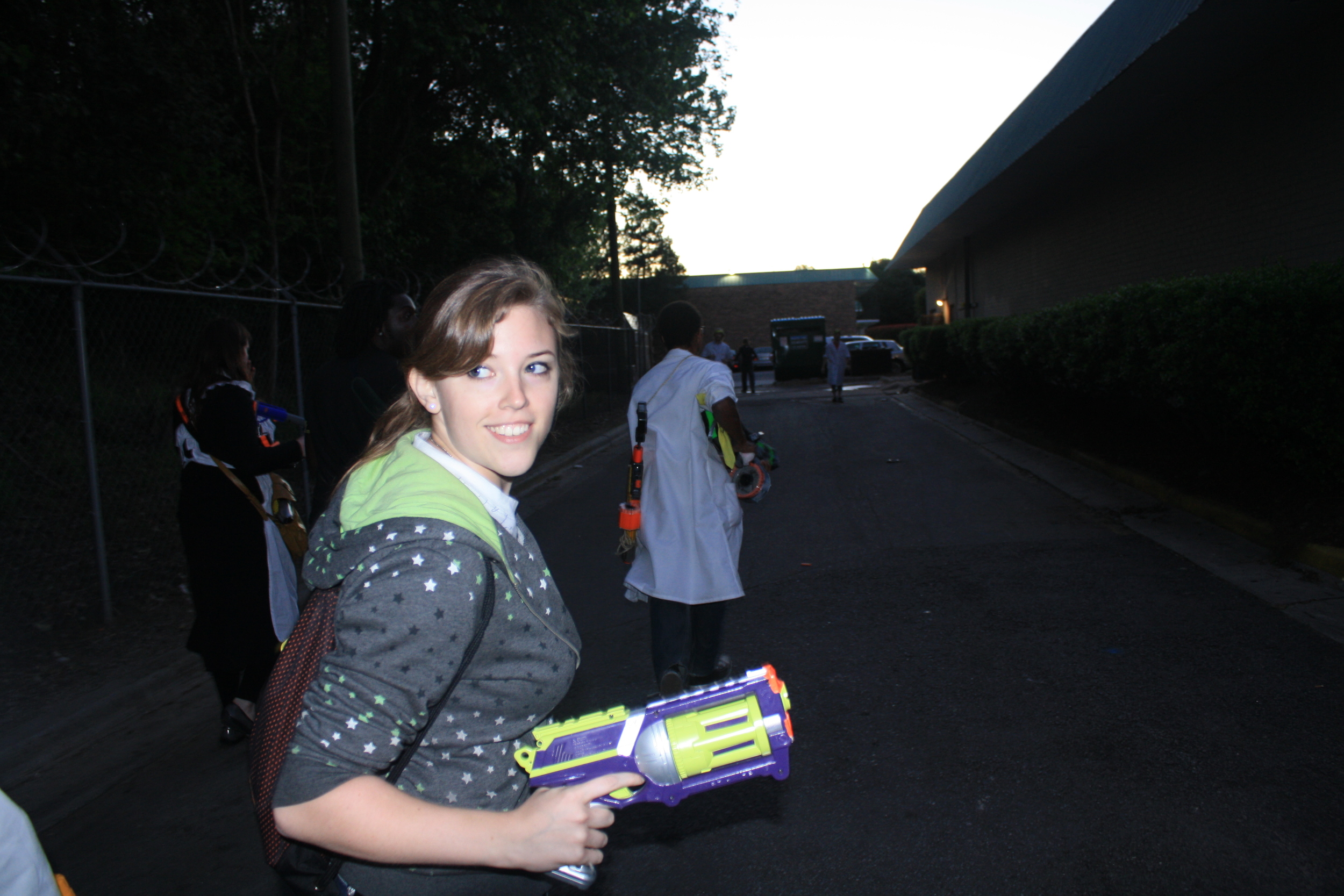Humans Vs. Zombies is a live action game where the players are split into 2 factions, the Humans and the Zombies. The Zombies start off with only 1 player, and by tagging humans, by touching them with both hands, Zombies convert Humans to join the Zombie Horde. Humans' only protection are foam dart blasters and soft thrown projectiles that upon hitting a zombie, removes them from the game for around 15 minutes. The game takes place over many days, and every night there is a main story mission with objectives for both Humans and Zombies to achieve. The outcome of these missions affects the narrative of the game, and the power-ups each faction receives. The following is the General Rules video I produced as lead designer on the project:
Humans Vs Zombies is a game with instances played around the world, however, SCAD's Humans vs Zombies (HvZ) takes it a step further with dynamic story telling, missions, a class/power up system, a side quest system, Interactive website functionality and more. I participated in the planning of two huge annual Humans Vs Zombies events, the latter of which I held responsibilities as the Lead Designer. At SCAD, the annual event normally hosts 450+ players. These events spawned a sub-culture, that eventually was established as an official club, that met every week, averaging 125 players per meeting. I took the initiative and designed events and media for the group, helping to organize it during its infancy.
HvZ 2011 - I served on the gameplay team and contributed heavily to the design of the game, its player classes and missions. During the game, I acted as moderator, ensuring rules were clearly understood and upheld during game-play. I also contributed to the marketing and media of the game.
HvZ 2012 - I was responsible for leading a team of designers and other disciplines to craft the game, its story, missions, classes, props, etc. During the game, I co-lead a team of 13+ moderators to organize the game and uphold game and residence-life and housing rules. During some missions, I also acted as a Non-Player Character, adding flavor and setting to the game's missions. Otherwise, I acted as moderator.
Designing for HvZ is a very challenging task. Unlike designing a board game or a video game, you do not have complete control over the player’s abilities. We humans have vastly different capabilities from each other, and I had to take into account that wide range of ability and interaction while designing. It required a lot of foresight, insight, and flexible design to accommodate for the unexpected. When designing missions, specific variables, such as objective duration, were always left as a tentative range until we had certain analytics, such as human to zombie ratio, and the rate of zombie conversion, before locking them in and sending the mission emails out at least 5 hours in advanced.
Leading and designing HvZ 2012 was a great experience and the media for the event was a blast to create. A colleague was the lead media coordinator, but I contributed by directing and editing the trailer explaining the rules of the game. I still had a responsibility to interact with the media team to keep the art direction consistent with the theme and lore of the year's game. Interfacing with Residence Life and Housing granted good experience and insight into what working with a production company might be like; We were given restrictions, constraints and budget allocations, and worked within these boundaries. Managing the budget for HvZ, a massive game with many props to build, and media to produce, with the limited funds was a welcome challenge.
Humans vs. Zombies is more than just a game of tag; its a game that immerses people in a memorable, paranoia infused experience, that affords networking, socializing, and teamwork with other students that may never have met each other otherwise. Great care was taken when designing of the elements of the game to afford social interaction. HvZ creates bonds between people; The year I acted as Lead Designer, two players, who met each other through the game a year earlier, got engaged at the end of the final mission, ending the event on an even more fantastic note.
Scad Nerf UnderGround (SNUG) was the sub-culture that spawned from Humans Vs Zombies that met weekly. I designed different game modes to play to keep things interesting. SNUG was more organic and grass roots in nature. I contributed a lot when it came to organization, and designing different game modes and props, however, I always encouraged other people to step up and take charge and organize some nights; It was amazing watching people break out of their shell, become more social, take responsibility, and step up to the plate and enjoying themselves.
During 2011, I had an internship with Gnarwhal Studios, the people that created the original instance of Humans Vs Zombies. While there, I was tasked with interviewing other's who have hosted these types of events around America. I helped write and maintain the official Humans Vs Zombies wiki page by compiling similar missions into archetypes, and providing other resources for those seeking to host and design their own HvZ events.
Documentation Links:

